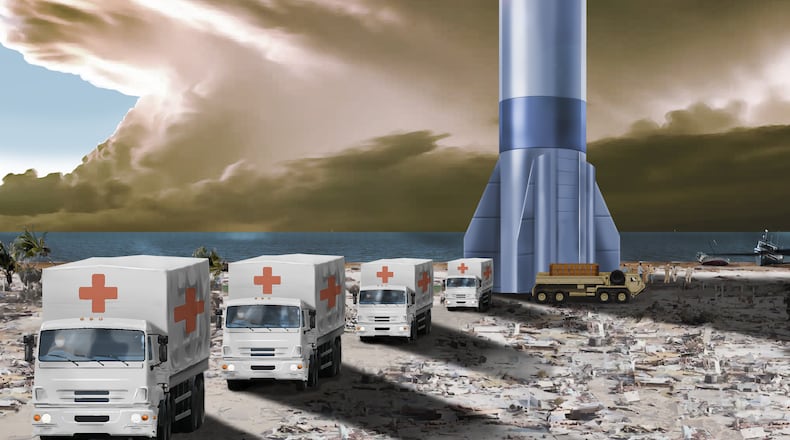And the lab is looking for the private partners who can help make that vision a reality.
AFRL commander Maj. Gen. Heather Pringle said during a media roundtable Friday that the effort is part of AFRL’s “transformational portfolio” of “game-changing capabilities” that the lab calls “vanguards” or areas of focus.
This particular vanguard will research and harness commercial rocket resources for Department of Defense logistics needs, putting a 100 tons anywhere on what Pringle called “tactical timelines.”
That kind of load is comparable to what a C-17 airlifter can haul, only at far greater speeds — if the concept is viable, and those overseeing the project believe it’s worth exploring.
One goal here is to explore whether re-usable rocket services at lower costs per launch are achievable. Rockets must be able to land in unforgiving terrain and then unload cargo quickly.
The 711th Human Performance Wing at Wright-Patterson could contribute to aspects of the project, as could the Aerospace Systems Directorate, also at Wright-Patterson, which could work on some of the high-speed physics and air-drop needs of the work, Pringle said. Other directorates and AFRL locations across the nation are expected to contribute.
AFRL will not design or build the rockets. And don’t expect local rocket launches.
There is almost no chance launches could happen anywhere near Wright-Patterson, said Dr. Greg Spanjers, the AFRL rocket cargo program manager. Instead, they will happen wherever commercial sector partners are doing their launches, and many of those are near water.
“As far as where they will land, well, if they (commercial partners) have ports around the planet, they should land at those ports,” Spanjers said. “And at the S&T (science and technology) level, we’re certainly going to explore if we can extend that capability to land in a number of diverse locations, including exploring the capability to potentially air-drop from the rocket.”
It’s an overall effort to determine how far that capability truly extends. “Is it really global?” Spanjers said. “Or where do you really run into limits?”
“We know there’s a thousand issues we need to dig into,” he added.
“Our goal is to be an early adopter here,” said Brig. Gen. Jason Cothern, vice commander of the Space and Missile Systems Center.
The Air Force spent $9.7 million on the project this fiscal year and it has requested just under $48 million for the fledgling concept in the coming fiscal year.
A first commercial test has not been scheduled, although AFRL has performed computer simulations of the concept, Spanjers said. The notion now is to let private companies develop a product that “stands on its own two feet,” he said.
“We will adjust our schedule to meet their timeline,” he said.
About the Author



